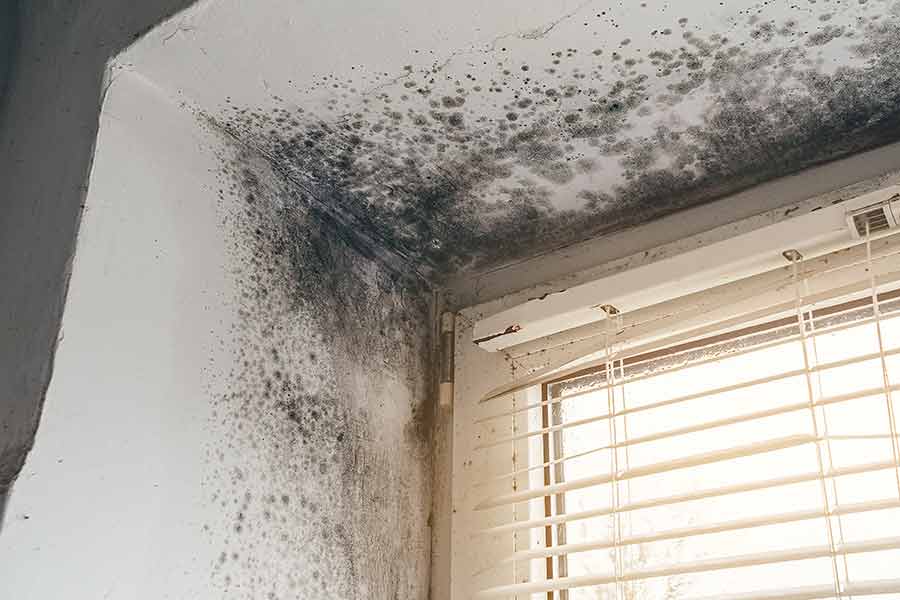Ceiling mold is one of the most common—and most overlooked—indoor air quality issues in homes and commercial buildings. Mold growing on the ceiling isn’t just unsightly; it can also be a health hazard and a warning sign of underlying structural or moisture problems. Whether you’re noticing black spots forming above your shower or discoloration in the corners of your bedroom ceiling, it’s essential to understand what causes mold on ceilings and how to prevent it from coming back.
Common Causes of Ceiling Mold
1. Roof Leaks
A leaking roof is one of the most direct causes of ceiling mold. When rainwater seeps through compromised roofing materials, it settles into the attic or upper drywall layers. Over time, this hidden moisture can feed mold colonies that spread throughout the ceiling surface. Often, the mold isn’t visible until it’s already taken hold.2. Poor Ventilation and Air Circulation
Insufficient airflow traps humidity in enclosed spaces. Bathrooms, kitchens, and laundry rooms are especially vulnerable if not properly ventilated. Mold thrives in stale, moist air—especially when that air rises and condenses on cooler ceiling surfaces. Installing exhaust fans, opening windows regularly, or using dehumidifiers can help reduce indoor humidity and prevent condensation-related mold problems.3. Inadequate Insulation
When insulation is lacking or poorly installed, warm indoor air meets cold ceiling surfaces—particularly in attics or top-floor rooms. This contact causes condensation to form, creating a perfect environment for mold spores to grow and spread. Proper ceiling insulation not only improves energy efficiency but also helps regulate surface temperature to reduce condensation risk.4. High Indoor Humidity
Humidity levels above 60% significantly increase the likelihood of mold growth on ceilings. Everyday activities like showering, cooking, and drying clothes indoors release large amounts of moisture into the air. Without adequate ventilation, this moisture rises and settles on cooler upper surfaces—often leading to mold development. Using a hygrometer to monitor indoor humidity levels and maintaining them between 30–50% can help keep ceiling mold at bay.5. Plumbing Leaks
Pipes hidden within or above ceiling structures can develop slow leaks that go unnoticed for weeks or months. Even small drips from a water line or HVAC condensation drain can saturate ceiling drywall or insulation materials. This type of prolonged dampness almost always results in mold formation. Routine plumbing inspections and leak detection systems can help prevent long-term water damage and microbial growth.6. Aftermath of Flooding or Water Damage
Water damage from flooding or burst pipes can leave moisture trapped in walls and ceilings long after the surface appears dry. Even high-powered fans may not completely dry interior cavities. This residual moisture can create hidden mold infestations that later break through the ceiling surface. Professional water damage restoration and mold remediation services are crucial after any major water event.Signs of Mold on Your Ceiling
- Black or green discoloration on ceiling corners or around vents
- Peeling paint or bubbling drywall
- Musty odors, especially in upper floors or bathrooms
- Allergy-like symptoms that worsen indoors
Why You Shouldn’t Ignore Mold on the Ceiling
Mold exposure has been linked to a variety of health issues, including respiratory irritation, headaches, skin problems, and even chronic fatigue. Ceiling mold can also indicate more serious hidden moisture problems that may compromise your building’s structural integrity. Left untreated, mold damage can spread quickly and become increasingly difficult and expensive to remediate.How to Prevent Mold Growth on Ceilings
- Fix roof leaks and water intrusion issues immediately
- Install exhaust fans in bathrooms, kitchens, and laundry areas
- Improve attic insulation to reduce temperature differences
- Maintain indoor humidity levels below 50%
- Schedule annual plumbing inspections to catch hidden leaks
- Hire a professional for mold testing in San Diego if you suspect a problem

